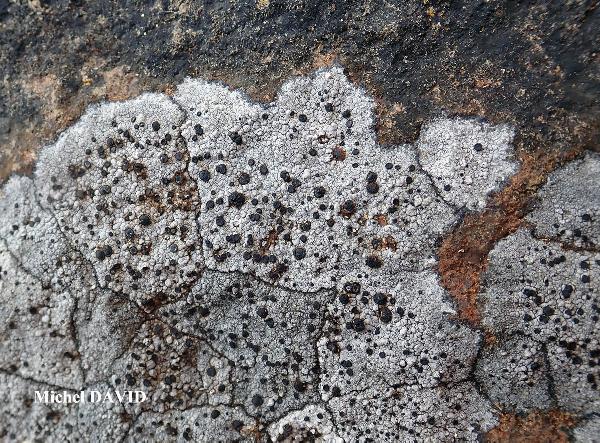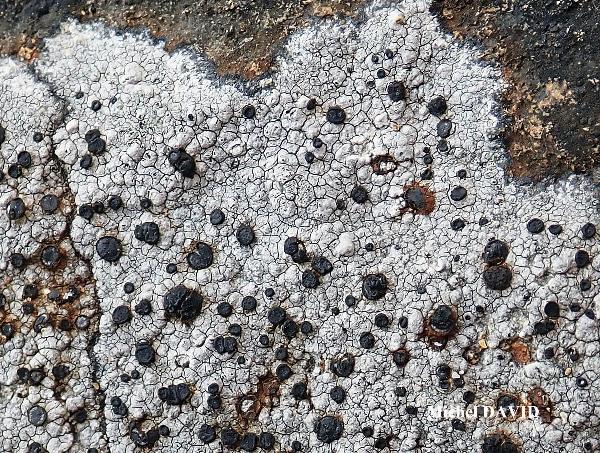Porpidia irrigua Orange
Lichenologist, 46: 280, 2014.
Synonyms:
Distribution:
Description: Thallus crustose, thinly episubstratic, white or pale grey, rarely with a pale blue-grey hue, continuous to rimose-areolate, the areoles arising on a sometimes poorly evident blue-black to black prothallus, 0.1-0.4 mm thick. Apothecia lecideine, becoming sessile as soon as the young disc begins to expand, up to 2 mm across, with a black, flat to finally strongly convex, usually epruinose disc and a smooth or rarely faintly striate, 60-220 µm thick, finally often excluded proper margin. Proper exciple brown to dull green brown or dark dull greenish blue in outer part, paler brown throughout within, the hyphae 3.5-8(-12) µm thick; epithecium dull green-brown or brown, K-; hymenium colourless, 100-140 µm high; paraphyses 1.5-2 µm thick at mid-level, the apical cells up to 3.3 µm wide; hypothecium brown to red-brown. Asci 8-spored, elongate-clavate, with a thin, outer amyloid layer and a thickened tholus penetrated by a pore, the sides of which are strongly amyloid, Porpidia-type. Ascospores 1-celled, hyaline, ellipsoid, (15-)16.5-20.5(-21.5) x (7.5-) 8-10.5(-12.5) µm, surrounded by a thin perispore. Pycnidia frequent, multilocular, with several ostioles, the apex uneven, black. Conidia simple, hyaline, straight, 8-11 x c. 0.8 µm. Photobiont chlorococcoid. Spot tests: cortex and medulla K-, C-, KC-, P-, UV-. Chemistry: methyl 2′-O-methylmicrophyllinate (major), 2′-O-methylmicrophyllinic acid (trace) and traces of 2 unidentified substances.Note: a species of damp siliceous rocks, almost indistinguishable from P. contraponenda without TLC. The total distribution is still poorly known, but Roux & Coll. (2025) mention several samples from the Alps, some of which (e.g. Mont Blanc) are not far from the Italian border. To be looked for in the Italian Alps.
Growth form: Crustose
Substrata: rocks
Photobiont: green algae other than Trentepohlia
Reproductive strategy: mainly sexual
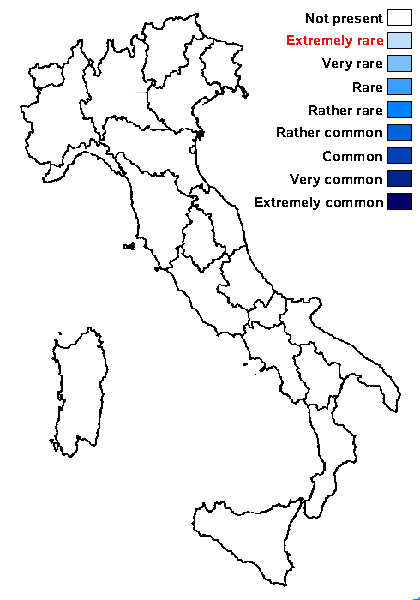
Predictive model

Michel David - Source: http://www.lichensmaritimes.org/index.php?task=fiche&lichen=412&lang=en
France, Pointe de Kerdra
with Cecidonia xenophana
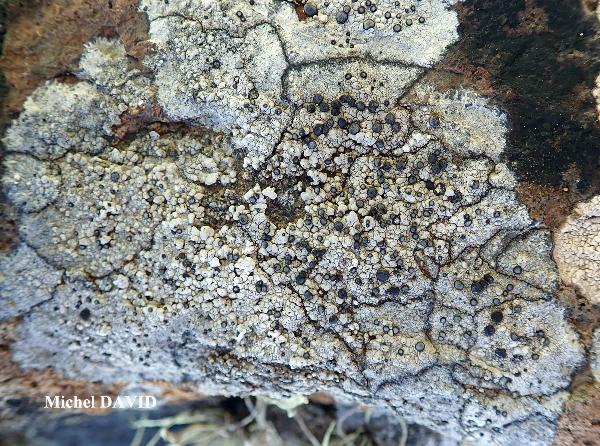
Michel David - Source: http://www.lichensmaritimes.org/index.php?task=fiche&lichen=412&lang=en
France, Pointe de Kerdra
with Cecidonia xenophana
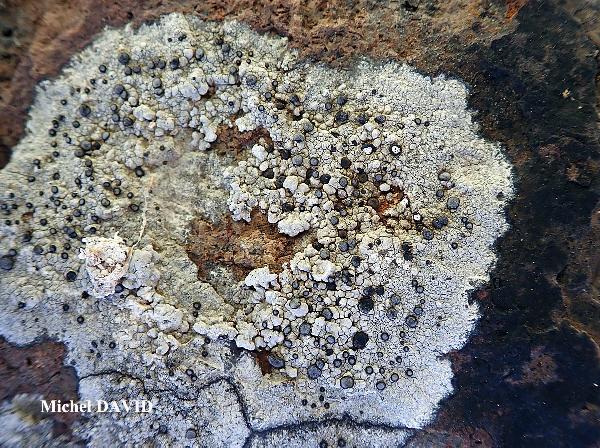
Michel David - Source: http://www.lichensmaritimes.org/index.php?task=fiche&lichen=412&lang=en
France, Pointe de Kerdra
with Cecidonia xenophana
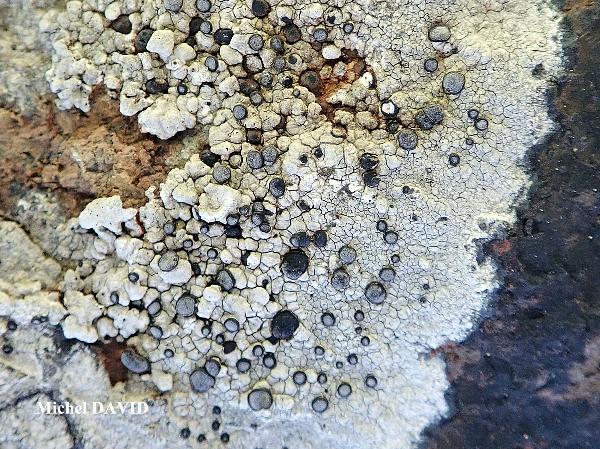
Michel David - Source: http://www.lichensmaritimes.org/index.php?task=fiche&lichen=412&lang=en
France, Pointe de Kerdra
with Cecidonia xenophana
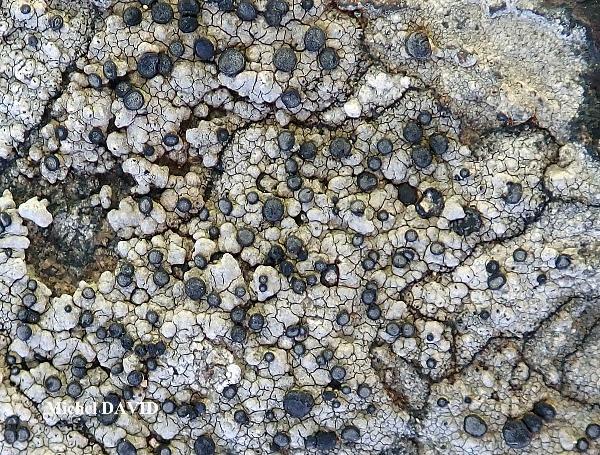
Michel David - Source: http://www.lichensmaritimes.org/index.php?task=fiche&lichen=412&lang=en
France, Pointe de Kerdra
with Cecidonia xenophana
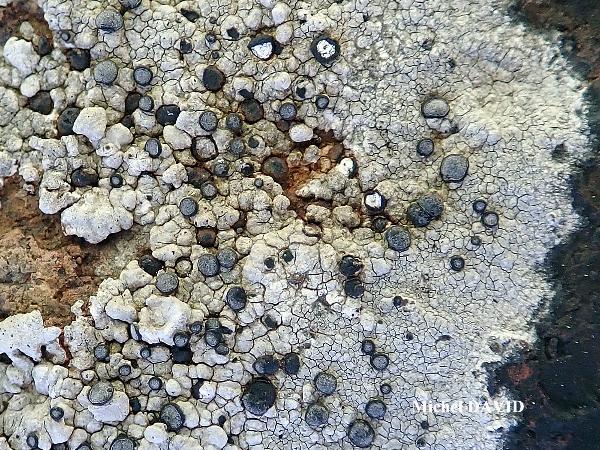
Michel David - Source: http://www.lichensmaritimes.org/index.php?task=fiche&lichen=412&lang=en
France, Pointe de Kerdra
with Cecidonia xenophana
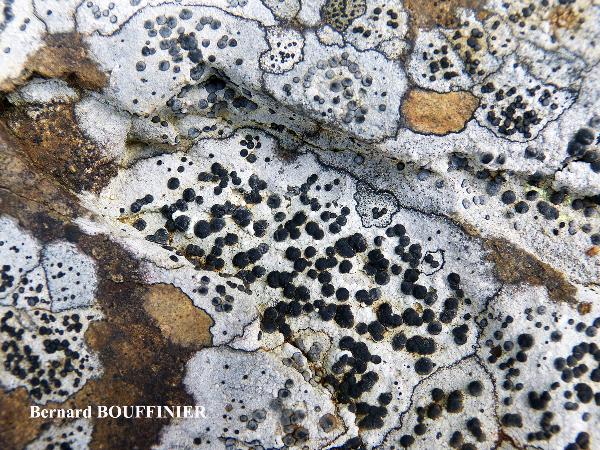
Bernard Bouffinier - Source: http://www.lichensmaritimes.org/index.php?task=fiche&lichen=412&lang=en
France, Pointe de Kerdra
with Cecidonia xenophana
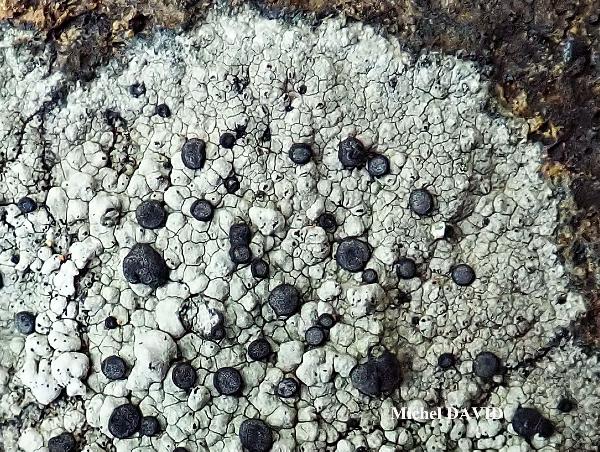
Michel David - Source: http://www.lichensmaritimes.org/index.php?task=fiche&lichen=412&lang=en
France, Pointe de Kerdra
with Cecidonia xenophana
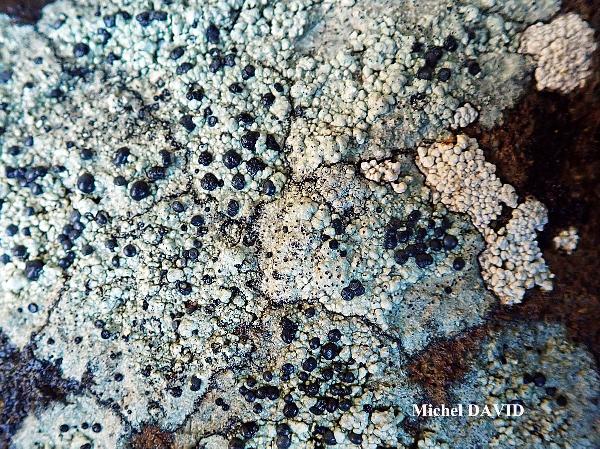
Michel David - Source: http://www.lichensmaritimes.org/index.php?task=fiche&lichen=412&lang=en
France, Pointe de Kerdra
with Cecidonia xenophana
Growth form: Crustose
Substrata: rocks
Photobiont: green algae other than Trentepohlia
Reproductive strategy: mainly sexual

Predictive model

Michel David - Source: http://www.lichensmaritimes.org/index.php?task=fiche&lichen=412&lang=en
France, Pointe de Kerdra
with Cecidonia xenophana

Michel David - Source: http://www.lichensmaritimes.org/index.php?task=fiche&lichen=412&lang=en
France, Pointe de Kerdra
with Cecidonia xenophana

Michel David - Source: http://www.lichensmaritimes.org/index.php?task=fiche&lichen=412&lang=en
France, Pointe de Kerdra
with Cecidonia xenophana

Michel David - Source: http://www.lichensmaritimes.org/index.php?task=fiche&lichen=412&lang=en
France, Pointe de Kerdra
with Cecidonia xenophana

Michel David - Source: http://www.lichensmaritimes.org/index.php?task=fiche&lichen=412&lang=en
France, Pointe de Kerdra
with Cecidonia xenophana

Michel David - Source: http://www.lichensmaritimes.org/index.php?task=fiche&lichen=412&lang=en
France, Pointe de Kerdra
with Cecidonia xenophana

Bernard Bouffinier - Source: http://www.lichensmaritimes.org/index.php?task=fiche&lichen=412&lang=en
France, Pointe de Kerdra
with Cecidonia xenophana

Michel David - Source: http://www.lichensmaritimes.org/index.php?task=fiche&lichen=412&lang=en
France, Pointe de Kerdra
with Cecidonia xenophana

